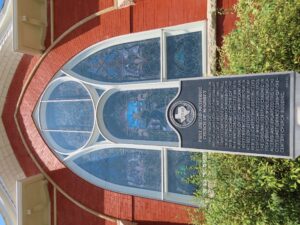Stained Glass
“It has the glory of God and a radiance like a very rare jewel, like jasper, clear as crystal.” (Rev 21.11)
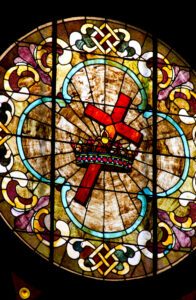
Cross & Crown
The cross and the crown symbolize two things: Jesus is Lord, and the crown of life that awaits each of us as the faithful.
The cross is red, signifying the blood of Christ. It rests inside a “quatrefoil,” a four-lobed design that stands for things in “fours,” like the tips of the cross, or the four evangelists.
“So that at the name of Jesus every knee should bend, in heaven and on earth and under the earth, and every tongue should confess that Jesus Christ is Lord, to the glory of God the Father.” (Phil 2.10-11)
“[We] are children of God, and if children, then heirs, heirs of God and joint heirs with Christ.” (Rom 8.16-17)
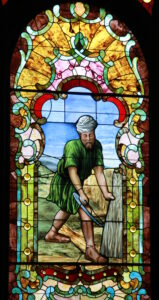
The Harvester
The harvest represents those gathered into the Kingdom community, and the harvesters are those who work toward that goal.
The color of the harvester’s clothing is green, identified with growth, fertility, life, and hope.
“The harvest is plentiful, but the laborers are few; therefore ask the Lord of the harvest to send out laborers into his harvest.” (Luke 10.2)
“So let us not grow weary in doing what is right, for we will reap at harvest time, if we do not give up.” (Gal 6.9)

The Anchor Cross
Metaphorically the church is a ship within which we navigate the chaotic waters of life. That ship is anchored by the Christ of the cross. Again, the anchor is red, situated inside a quatrefoil.
“We have this hope, a sure and steadfast anchor of the soul, a hope that enters the inner shrine behind the curtain, where Jesus, a forerunner on our behalf, has entered, having become a high priest forever….” (Heb 6.19-20)
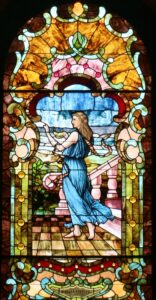
Dorcas
Dorcas (also called Tabitha) is known as one who gave freely from her heart. When she fell ill and died, Peter resuscitated her through the Spirit.
Dorcas’s dress is a sky blue, associated with fidelity and heaven.
“Now in Joppa there was a disciple whose name was Tabitha, which in Greek is Dorcas. She was devoted to good works and acts of charity.” (Acts 9.36)
“Peter put all of them outside, and then he knelt down and prayed. He turned to the body and said, ‘Tabitha, get up.’ Then she opened her eyes, and seeing Peter, she sat up.” (Acts 9.40)
Lord, help us to be people who, like Dorcas, are known for our generosity of spirit. Amen.
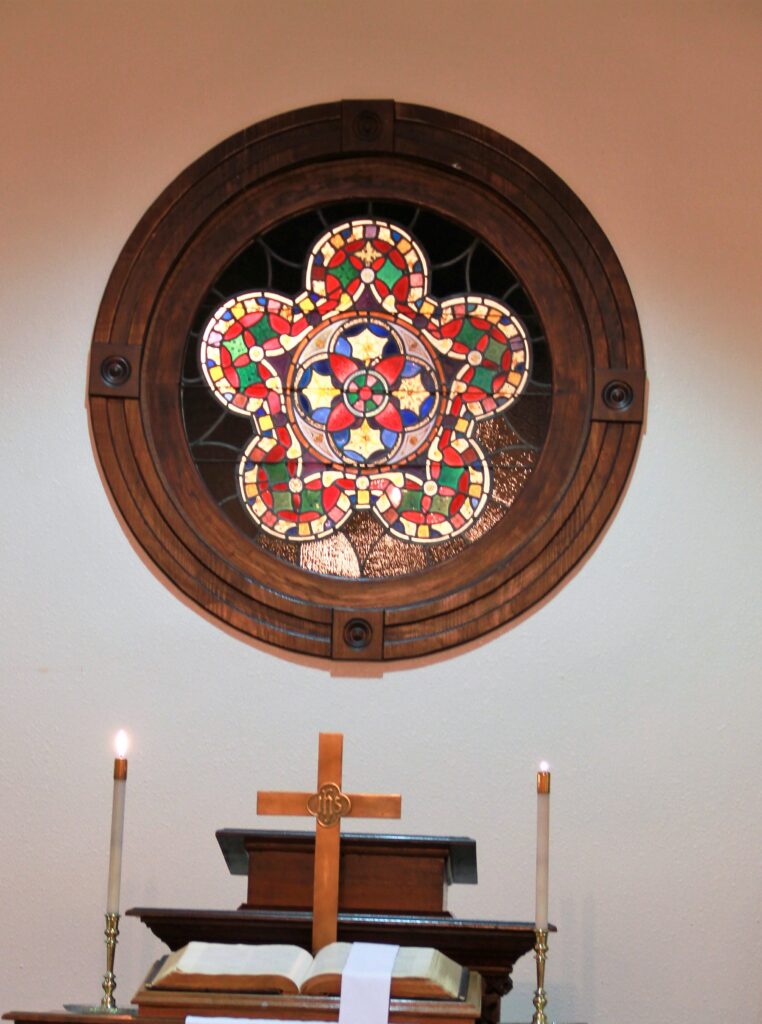
Rose or Star, Chapel Window
Traditionally the rose is seen as the “eye of God.” When centrally located in the front of the church, the window becomes the portal that “guides” the ship, the Divine Light piercing the darkness without and illumining the soul within. The five points of the star customarily represent the five wounds of Christ. The center is the “eye,” with red here representing the color of love.
“Truly the eye of the LORD is on those who fear him, on those who hope in his steadfast love.” (Psalm 33.18)
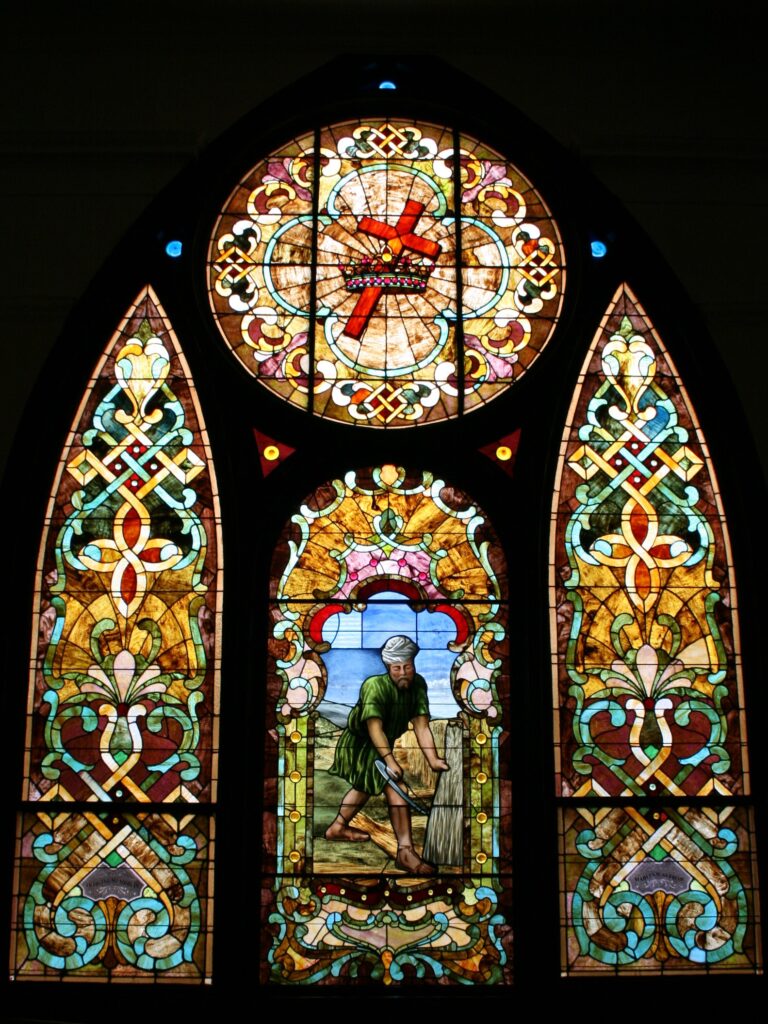
North Window, Lamar Street
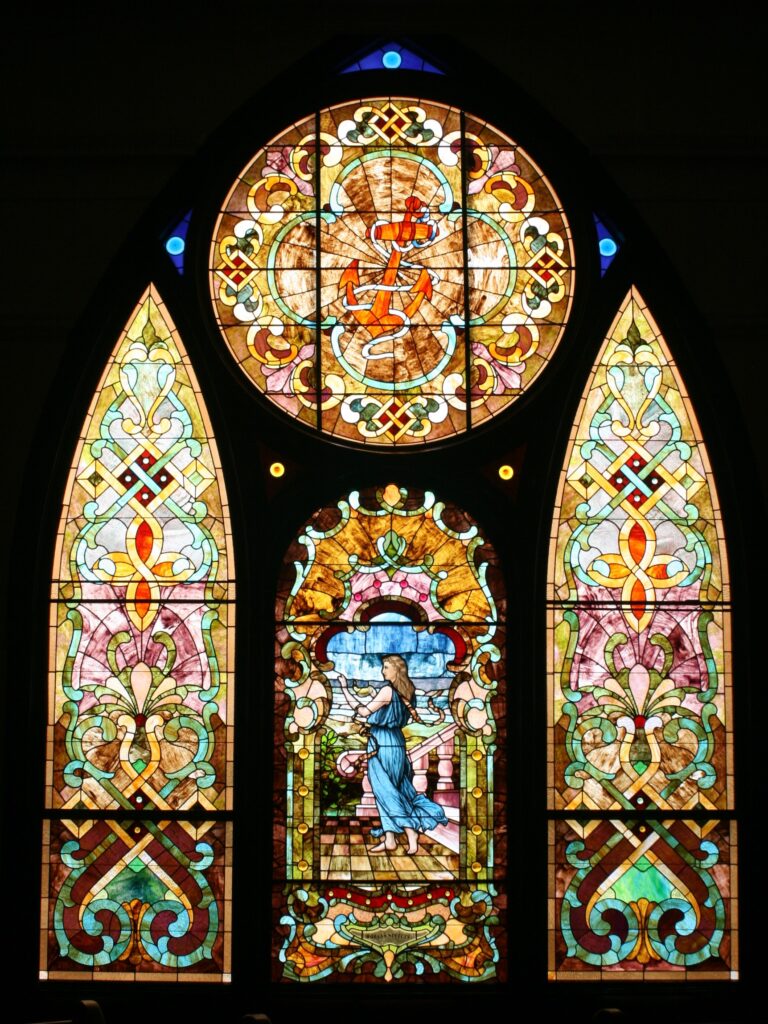
East Window, Church Street
